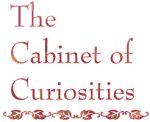
|
| |
| By Lisa Cianci | ||
|
| ||
| Second Section - Third Pair of Drawers | ||
Two-way traffic - 'Dear William, Thank you for your letter...'Early professorships at Australian universities tended to be taken by British scientists. Some, like physicist William Henry Bragg, were barely graduates themselves. Australia offered good salaries, but few obvious opportunities for advancement. However, it was no dead-end! Despite his complaints of isolation, Bragg developed his own network of scientific contacts and began a program of research that was to lead to a chair in England and a Nobel Prize in physics. Through Bragg and others, Australian physics maintained a close connection with some of the world's leading practitioners - there was a strong two-way flow of people and ideas.But was it possible to develop an international career while remaining in Australia? Another Nobel prize-winner, Macfarlane Burnet, remade the field of immunology from his post as Director of the Walter and Eliza Hall Institute in Melbourne. Burnet actively sought to promote Australian science and published many of his findings in Australian journals, ensuring that the journals would receive increased international exposure. A scientist's ability to contribute is not determined by their location - what about their contacts, their discipline, their resources? |
[ The Cabinet | Bright Sparcs | ASAPWeb ]
Prepared by Tim Sherratt (Tim.Sherratt@asap.unimelb.edu.au)
for publication on ASAPWeb. Last modified 22 June 1997.
